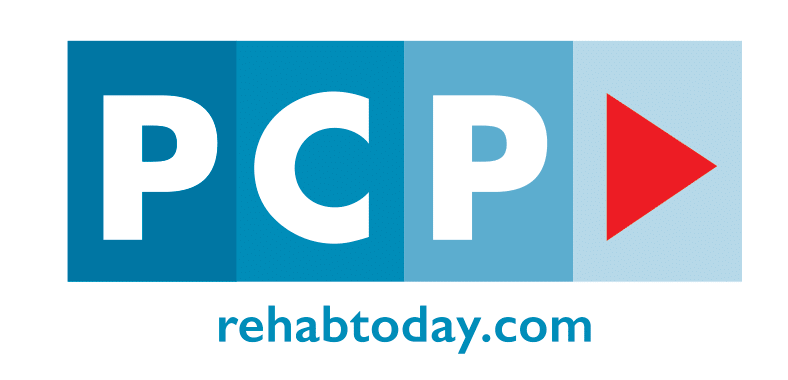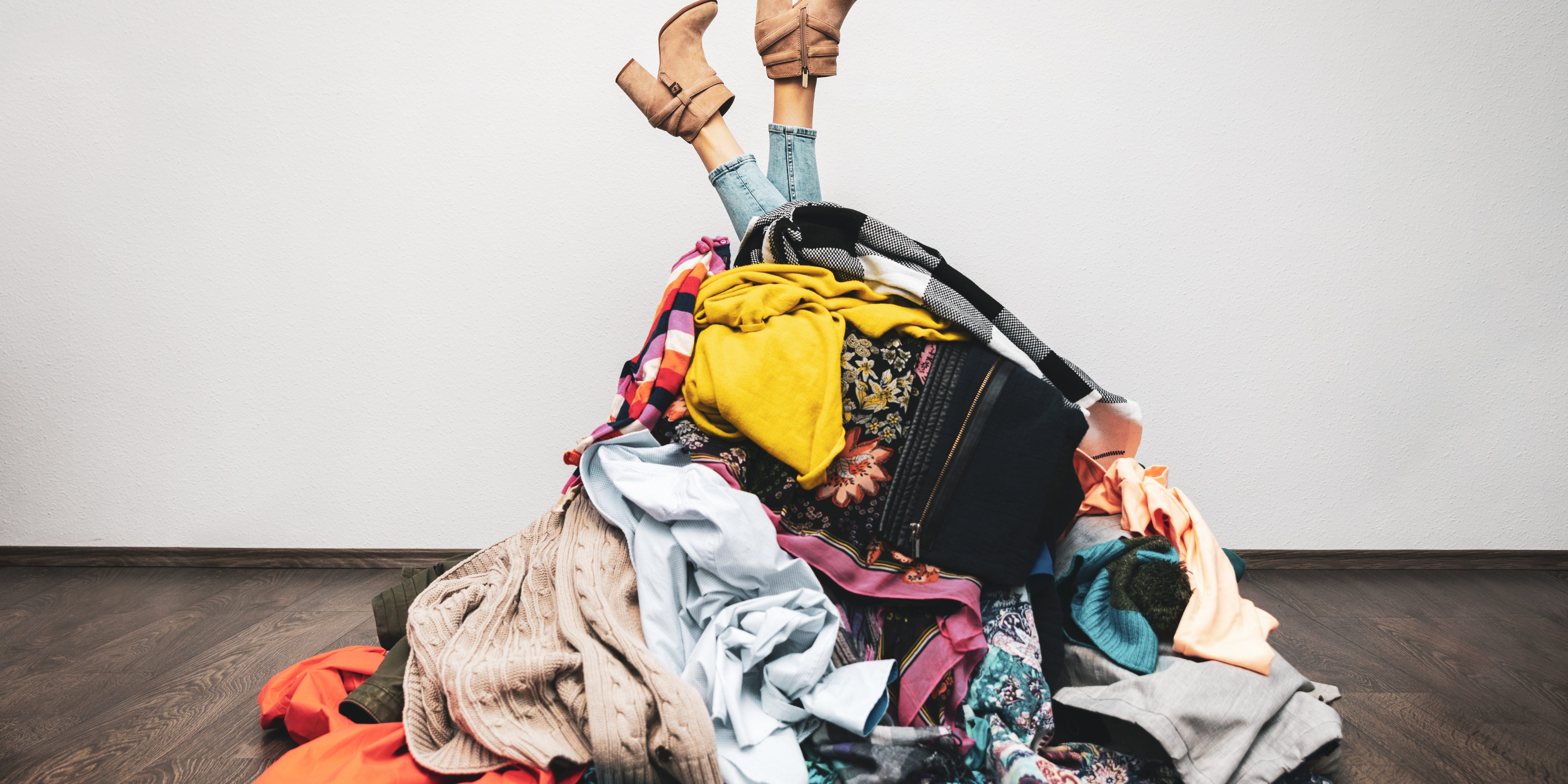Shopping addiction is not a term often heard in the world of mental health, yet it is a growing concern in modern consumer-driven societies. In a world filled with enticing discounts, easy access to credit, and a constant stream of advertisements, the temptation to indulge in shopping can be overwhelming.
While occasional shopping sprees are normal, for some individuals, the urge to buy becomes an uncontrollable compulsion, leading them to become addicted to shopping, which results in financial distress, emotional turmoil, and social consequences.
That is why at PCP we are dedicated to providing important information about shopping addictions. We believe that understanding shopping addiction, its underlying causes, and promoting effective coping strategies is crucial in helping those affected regain control over their spending habits and overall well-being.
Key Takeaways
Shopping addiction is a recognised behavioural disorder affecting about 1 in 20 people.
It can cause financial distress, strained relationships, emotional turmoil, and other negative consequences.
Common signs include impulse buying, hiding receipts, shopping to escape emotions, and experiencing guilt after purchases.
Coping strategies like budgeting, avoiding triggers, and therapy can help manage compulsive buying.
Seeking professional help is crucial for recovery, especially since shopping addiction often coexists with other mental health conditions.
What Is a Compulsive Buying Disorder?
Also known as a compulsive buying disorder, pathological buying, or oniomania; a shopping addiction is an excessive and overwhelming desire to purchase items despite the associated negative repercussions.
Compulsive buying is poorly understood, with relatively little research existing on the condition. Most experts classify a shopping addict as a type of behavioural addiction similar to compulsive gambling or drug addiction. Others consider it a failure of impulse control like ADHD, obsessive-compulsive disorder, or even a manifestation of mood disorders like anxiety or depression.
Despite this confusion, a shopping addiction is a very real condition which affects approximately 1 in 20 individuals. Compulsive buying is more common in developed economies due to the presence of a strong market-based economy with a wide variety of products, as well as more disposable income and leisure time.
Some studies suggest that compulsive buying is more common in women, with a few claiming that women make up as many as 80% of the cases of a shopping addiction. However, other research has found a more equal distribution between both sexes, with a significant number of men camouflaging pathological buying habits as hobbies.
Shopping addictions are also more common among young people, typically starting in the late teens or early twenties. However, most cases of compulsive buying are not diagnosed until much later in life when significant consequences such as debt or legal troubles may have already occurred.

Interestingly, within developed economies income level seemed to have little to do with the risk of developing a shopping addiction, though it did influence the type of items purchased.
Most pathological buyers do not make costly purchases, with the most commonly purchased items including clothing, shoes, compact discs, jewellery, cosmetics, and household items. However, the high volume and frequency of these purchases can quickly add up to a significant financial burden.
What Causes a Shopping Addiction?
There is very little research on the cause of compulsive buying, though it has been shown to run in families, especially families with a history of substance use disorders or mood disorders. People with a shopping addiction are also more likely to have coexisting diagnoses like substance use disorders, anxiety, depression, or another mental health condition.
Some research suggests that traumatic childhood events may play a role, while other studies place more emphasis on the role of neurotransmitters like dopamine and serot
Mental Health Conditions and Other Disorders
Shopping addiction often co-occurs with other mental health conditions, including anxiety disorders, depression, and obsessive-compulsive disorder (OCD). Research indicates that individuals with shopping addiction are more likely to experience these comorbid mental health conditions, which can exacerbate the symptoms of compulsive buying. For instance, those with anxiety disorders may turn to shopping as a coping mechanism to manage their anxiety, while individuals with depression might use shopping as a way to temporarily lift their mood.
In addition to mental health conditions, shopping addiction can also be linked to other disorders, such as substance use disorders and behavioral addictions. For example, individuals with a history of substance use disorders may develop shopping addiction as a way to replace the thrill of substance use with the excitement of shopping. This substitution can create a new cycle of dependency, making it crucial to address all underlying mental health conditions in the treatment of shopping addiction.
Personality Characteristics and Materialism

Individuals struggling with shopping addiction often exhibit certain personality characteristics, such as low self-esteem, impulsivity, and a tendency to seek external validation. These traits can significantly contribute to the development of compulsive buying, as individuals may use shopping as a way to boost their self-esteem or gain approval from others. The temporary satisfaction derived from purchasing new items can create a false sense of self-worth, perpetuating the cycle of addiction.
Materialism is another common trait among those with shopping addictions. Materialistic individuals place a high value on material possessions and may use shopping as a means to acquire status, prestige, or a sense of belonging. This desire to keep up with the latest trends or own the newest products can lead to a relentless cycle of compulsive buying. The pressure to maintain a certain image or lifestyle can drive individuals to make unnecessary purchases, further entrenching their addiction.
Signs of a Shopping Addiction
Identifying shopping addiction signs can be difficult sometimes because some individuals go to extreme lengths to hide their shopping habits. However, some telltale signs can help you recognise a shopping addiction:
Rationalising Unreasonable Purchases: Going to extreme lengths to rationalise purchasing decisions such as stating irresistible deals, the availability of cheap credit, or the absolute necessity of the product.
Seasonal Variation: Shopping addictions tend to be more pronounced during holidays because of societal pressures, the large number of sales, and heightened emotional triggers associated with gift-giving and festive spending.
Pre-purchase Distress: Many people with a shopping addiction have strong urges or preoccupations with the act of shopping, sometimes to the point of outright obsession. This may lead to anxiety or even depression which is only relieved by shopping.
Post-purchase High: Many people with a compulsive buying disorder feel a rush of relief or an abnormal degree of satisfaction after making a purchase, similar to the “high” felt by drug users.
Post-purchase Regret: After the initial sense of satisfaction, people with a shopping addiction often feel guilt or anxiety after making purchases, especially when the item is expensive or frivolous. However, they find it difficult to stop their pathological buying habits.
Financial Problems: Similar to individuals with compulsive gambling habits, some telltale financial signs of a shopping addiction are frequent borrowing habits, late payments, and spiralling debt.
Using Shopping as an Escape: Some people use compulsive buying as a form of escape from negative emotions like anxiety, depression, low self-esteem, or past trauma.
Impulse Buying: Impulse buying and unplanned shopping sprees are common signs of a compulsive buying disorder. Over sixty per cent of compulsive buyers reported making impulse purchases while shopping.
Hiding Their Buying Habits: Many compulsive buyers go to extreme lengths to hide their purchasing habits like lying about shopping habits, hiding receipts, or sneaking items into the house.

Returning Items Often: Sometimes compulsive buyers just buy things for the thrill of purchasing, frequently eventually returning these items.
Ignoring Necessities: People with CBD may prioritise shopping over essentials like bills, food, or savings.
Status Shopping: Status shopping means purchasing luxury or high-end items primarily to display wealth, social status, or prestige rather than for necessity or personal preference.
Buying Unnecessary Items: Compulsive buyers often make unnecessary purchases which they use less than expected and often try to give them back to shops, hide them or throw them away.
Strained Relationships: A shopping addiction can sometimes lead to strained relationships with family, friends, or professional colleagues as a result of mounting debts, lying about shopping habits, and even neglecting personal responsibilities.
Stages of a Shopping Addiction
The spending habits of compulsive buyers tend to follow a similar pattern, which often distinguishes it from irresponsible spending habits or a poorly planned shopping spree:
Anticipation Phase: During this phase, a compulsive buyer becomes preoccupied with thoughts and urges surrounding shopping for specific items, or even just the act of shopping itself, often driven by negative feelings such as anxiety or depression. They may also experience pre-purchase anxiety which pushes them further down the path of compulsive buying.
Preparation Phase: To satisfy the mounting urges from the anticipation phase, the buyer begins to plan for the shopping. This may include looking for promotions, recent trends, new stores, creating lists of items to buy, choosing which stores to go to and when, and sometimes even going as far as choosing exactly what to wear and which credit cards to use. Some compulsive buyers obtain some satisfaction from this stage, but the ultimate goal is the next step in the cycle.
Purchase Phase: This is the third phase of the shopping addiction cycle which involves the actual shopping experience. Many people with CBD describe this feeling as intensely exciting, and can even sometimes be likened to a sexual feeling. This is the desired payoff for many compulsive buyers, but unfortunately, the cycle often doesn’t end here.
Guilt Phase: Once the purchase is completed what often follows is a sense of letdown or disappointment. This regret may lead to anxiety, depression, and self-criticism, fueling further cycles of compulsive buying.
Negative Consequences of a Shopping Addiction
While some people may consider a shopping addiction to be less harmful than being addicted to psychoactive substances like opioids, they share many of the same dangers.
Emotional Distress: Compulsive shoppers tend to experience distressing feelings like guilt, anxiety, or depression which are directly related to their shopping habits, particularly after making a purchase.
Financial Instability: Pathological buying can often spiral out of control, leading to large debts, inability to meet financial obligations, and bankruptcy.
Mental Health Complications: Having a shopping addiction may increase your risk of developing other mental health conditions like mood and anxiety disorders, substance abuse, and eating disorders.
Hoarding and Clutter Issues: Compulsive buying often results in individuals accumulating large amounts of unnecessary items, creating disorganised and overwhelming living spaces which are a danger to both the person and society.
Relationship Strain: Shopping addiction can cause conflicts with family members, friends, and partners due to dishonesty, neglecting personal responsibilities, or financial burdens placed on loved ones. It can also lead to criticism from friends and family, as well as a complete breakdown in personal relationships.
Work and Social Impairment: The preoccupation with shopping can interfere with their job performance, social interactions, and responsibilities, leading to career and relationship setbacks.
Legal Consequences: In extreme cases, individuals may resort to fraudulent activities, theft, or financial mismanagement to support their addiction, leading to legal troub
How Do You Diagnose a Shopping Addiction?
Diagnosing a shopping addiction can be difficult since it is often concealed and may overlap with other compulsive behaviours like hoarding. However, there are three key features to look out for when recognising pathological buying:
Compulsive Shopping Habits: They have a pathological preoccupation with shopping, or an uncontrollable impulse to make purchases, often beyond reason and despite the shopping addiction signs associated with this behaviour.
Significant Emotional and Functional Impact: The compulsive buying behaviour leads to considerable distress, consumes excessive time, disrupts social or work life, or results in serious financial difficulties.
Not Limited to Mood Disorders: Excessive shopping behaviour is not solely confined to episodes of hypomania or mania. This is because sometimes compulsive buying patterns may be noticed during episodes of mania or hypomania, but typically disappear when the acute phase resolves.
Coping Strategies for Compulsive Shoppers

Like any form of addiction, one of the long-term aims is developing coping strategies that enable you to function safely in society without relapsing back into old ways. This is especially true for behavioural addiction, where effective therapy techniques and practical coping strategies are more important than medications. Here are a few useful strategies for dealing with a shopping addiction:
Create a Budget Plan: One of the dangers of a shopping addiction is financial ruin. Create a strict budget plan which carefully tracks your expenses and regular financial obligations. This allows you to safely bring out a small amount of money which can be spent on frivolous purchases without causing long-term financial harm. It’s also a good idea to encourage accountability by sharing this budget plan and your spending habits with friends, family or a sponsor.
Track Your Spending Habits: Creating a budget is only half of the work. Another important part is carefully tracking your expenses to ensure that you stick within the budget. This can be done using a simple journal or budgeting apps. The key is to stay consistent and track your expenses honestly, looking out for red flags like impulse purchases or overspending on specific items regularly.
Limit Your Exposure to Credit: Credit cards, short-term (often high-interest) loans, and even borrowing money from friends and family are some of the ways people with a shopping addiction fund their shopping sprees. Limit your exposure to these credit facilities by paying for items in cash or using a debit card.
Avoid Triggers: Similar to other forms of addiction, people with compulsive buying can be triggered by things like sales, festive periods, and new product releases, often using retail therapy as a coping mechanism. Some ways to avoid these temptations include unsubscribing from promotion updates, deleting online shopping accounts, performing holiday shopping before the festive period kicks in, and going shopping with someone charged with keeping you accountable.
Pause Before Making Purchases: A great way to deal with the urge to make unplanned expenses is to enforce a short waiting time before making purchases. This could be a forty-eight-hour waiting rule or even a three-day waiting rule. Often the urge to purchase these items fades with time and a waiting time also gives you time to determine whether you truly need these items.
Be Open About Your Struggles: Ensure you have trusted friends, family or even work colleagues who are aware of your struggles and help you stay accountable. They can go shopping with you, look through your weekly or monthly purchases, or act as an emergency contact when you feel triggered.
Create an Emergency Plan: Despite your best efforts, you will likely still encounter triggering situations. Developing an emergency plan helps you desks with these situations. An emergency plan includes exit strategies, practising how to turn down offers, and having emergency contacts you can call during triggering situations.
Effective Stress Management: Stress management is an important coping strategy for dealing with a shopping addiction. A significant number of relapses are linked to stress, which may encourage unhealthy coping mechanisms like irresponsible spending. Stress management techniques like yoga, meditation, exercise, journaling, and positive affirmations are great ways to deal with daily stressors.
Adopt Healthy Hobbies: Another great coping strategy is building healthy hobbies. Not only are hobbies a great way to manage stress but they can also be used to occupy a significant portion of your free time, leaving less room for expensive shopping sprees.
Why You Should See a Specialist for a Shopping Addiction
In severe cases, an addiction specialist can help you with your shopping addiction through various forms of addiction treatment. This includes providing different forms of therapy like cognitive behavioural therapy (CBT), financial counselling, bibliotherapy, and 12-step programmes like Debtors Anonymous.
Techniques like CBT are aimed at identifying thinking patterns and behaviours associated with triggers and relapse, as well as techniques for disrupting these thinking patterns, adopting healthy coping strategies, and developing healthy spending habits.
Addiction specialists sometimes offer drug therapies like SSRIs, a class of antidepressants which some evidence suggests are helpful in certain cases of shopping addiction.
Also, shopping addiction may sometimes coexist with other mental health problems like substance abuse, anxiety, depression, or eating disorders. An addiction specialist can also offer services aimed at treating these problems as well.
Seek Help Today
Shopping addiction is a serious behavioural disorder that goes beyond a simple love for spending money. Left unchecked, it can lead to financial ruin, emotional distress, and strained relationships. However, with the right awareness, support systems, and coping strategies, individuals struggling with compulsive buying can regain control of their lives.
Whether through budgeting, therapy, or seeking professional help, there are ways to break the cycle and develop healthier spending habits. By addressing the root causes and making conscious changes, those affected can move toward financial stability and emotional well-being, ultimately leading to a more balanced and fulfilling life.
If you or anyone you know is struggling with a shopping addiction, do not hesitate to reach out to PCP for help.
Author
-
Andy's journey in psychology and substance recovery is marked by significant educational and professional achievements. He studied Person Centered Counseling, gained insights from psychological literature, and completed an online course on the mind. His hands-on experience includes volunteering at a Drug and Alcohol Clinic and earning a diploma in child adverse experiences. Andy holds a first-class honors degree in Psychology with Substance Use and Misuse. Professionally, he has contributed as a Lived Experience Coordinator and counselor, offering hope and empowerment to those in recovery.
Qualifications and Experience:
Introductory Course in Person Centered Counseling
View all posts
Extensive study of psychological literature (including Carl Rogers and Freud)
Online course completion on the Mind from UCT
OCN peer mentoring course
Level 3 diploma in child adverse experiences
First-class honors degree in Psychology with Substance Use and Misuse
Experienced Lived Experience Coordinator for Probation Dependency and Recovery service








